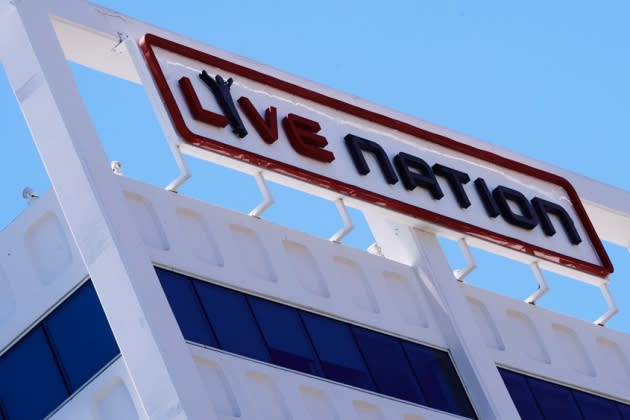Live Nation Posts Strong Quarter as Concert Business Cautiously Moves Ahead

UPDATED: Live Nation Entertainment, the world’s largest live-entertainment company, posted strong second-quarter earnings as the concert business cautiously moves ahead amid deep concerns over the spread of the Covid-19 variant and lower-than-sensible vaccination rates in the U.S.
Operating income for the quarter was up over $450 million and its adjusted operating income was back in the black as the company “is pacing for growth in 2022, 2023 and beyond.” Its event-related revenue was $2.1 billion, up $650 million. The company also said that all of its lines of business are tracking ahead of expectations for the quarter and the second half of 2021.
More from Variety
Music Industry Moves: Blink-182's Travis Barker Signs With Warner Chappell Publishing
Live Nation Offers $20 'All-In' Tickets for Alanis Morissette, Lil Baby, Jonas Brothers, More
“We expect to have over 6 million fans attend our festivals during the second half of the year, with about two-thirds of our festivals increasing their attendance compared to 2019,” CEO Michael Rapino said in prepared statement. “Most of our festivals sold out in record time while average ticket prices have been 10% higher than 2019. While still early, we have delivered a strong double digit increase in average per fan revenue and in on-site spending versus 2019 at our amphitheater shows over the past few weeks.”
According to the announcement, Ticketmaster, which is wholly owned by Live Nation, saw the fourth-best month in its history for transacted ticket volume, with 14 million tickets sold for 2022 and 11 million fee-bearing tickets added so far this year from new clients. It also said that on-site spending by fans at venues is up double digits compared to 2019, although those results may be skewed by the smaller number of concerts surveyed this year; CFO Joe Berchtold estimated during the earnings call it was around 50 amphitheater concerts.
Responding to a question during the call about whether 2022 looks robust primarily because of a backlog of tours, Rapino said during the call that most of their 2022 tours are not on sale yet — the bulk of shows currently on-sale are rescheduled dates.
“We’re very content with our 2022 lineup,” he said. “We’re talking mostly about what to add in 2023 and ’24, so the idea that it’s just one year of bigness just isn’t true. We’ve got three or four years of strong demand.”
Live Nation also says its sponsorship commitments for 2022 — a key indication of market confidence — are “up double digits” from 2019, with many strategic long-term partners recently added such as Allegiant Air, Adobe and Cinch. “We’ve talked about how much of our sponsorship is in the form of multi-year, multi-billion dollar, multi-asset strategic sponsorships, Berchtold said during the call. “And you know us, we probably wouldn’t be talking about expectations of growth for next year already unless we had a pretty good feeling that a lot of it was committed.”
It was a long way from the company’s first quarter report, which saw it losing around $300 million, after a year in which concert revenue was down 76% from $993.4 million to $239.4 million, ticketing was down 90% from $284.3 million to $28.3 million, and sponsorship and advertising were down 75% from $90.3 million to $22.6 million.
But it’s a different story now — at least, so far. Rapino continued, “As communities reopen, we’re seeing the pent-up demand for live events play out as artists and fans are eager to re-connect in person. In the U.S. and the U.K., we are seeing strong ticket sales and the restart of our concerts and festivals, highlighted over the past weekends by Lollapalooza and Rolling Loud in the U.S. and Latitude in the U.K. hosting a combined three quarters of a million fans. With vaccine rollouts increasing throughout Canada and Europe, we expect additional markets to open more broadly in the coming months.
“The momentum for the return to live events has been building every month, with ticket sales and concert attendance pacing faster than expected, underscoring the strength and resiliency of the concert business and live events in general. This progress, combined with our cost discipline, has enabled us to deliver positive adjusted operating income for the second quarter, well ahead of where we thought we would for this quarter. We expect to see further ramp-up accelerate through the rest of the year, with improving operating income and all segments returning to adjusted operating income profitability for the second half of the year, setting us up for a full-scale 2022.”
At the end of the second quarter of 2021, the company had total cash and cash equivalents of $4.0 billion, which includes $1.1 billion of free cash. This free cash, along with $971 million of available debt capacity, gives the company $2.1 billion of available liquidity.
Best of Variety
Sign up for Variety’s Newsletter. For the latest news, follow us on Facebook, Twitter, and Instagram.
